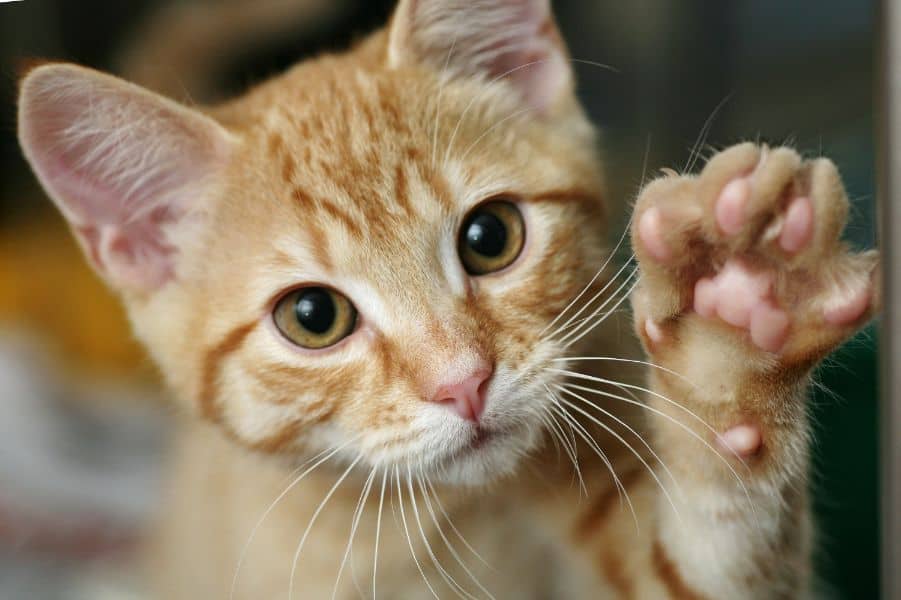Feline Aesthetic: Cats Have Whiskers For Reasons Beyond Looks

Cats have many physical attributes that add to their unique appeal, but only one of their features helps them avoid and escape sticky situations – whiskers!
Cats have whiskers to help them navigate their world. Whether it’s hunting, exploring or expressing emotions, whiskers are really the cat’s meow.
Whisker Anatomy
There’s a lot more to cat whiskers than meets the eye!
- These antennae-like appendages are actually special hairs with very deep roots. Despite the fact that they are stiffer than regular hairs, they are much more sensitive. The follicles that whiskers emerge from are stuffed with extra blood vessels and nerves that give them a tactile response to touch.
- Cats have whiskers around the eyes, chin, and even the forelegs, but the 12 whiskers on either side of the nose pick up the most information from their surroundings. Capable of detecting subtle air currents, whiskers can also help determine the size, shape, speed and location of certain objects, including predators and prey.
- The scientific name for cat whiskers is vibrissae which comes from the Latin word vibrio (to vibrate). There’s a good reason for that. When air circulates near the whiskers or the whiskers rub up against an object, they vibrate. Then the nerves in and around the follicle are stimulated and information is transmitted to the brain.
- At the very tip of each whisker is a sensory organ called a proprioceptor. These act like beacons for surrounding information and are responsible for moving it up to the brain. Without these, cats may lose their balance or have reduced handling of their moving body.
Up Close and Personal
Because cats see better at a longer range, whiskers help them “see” objects closer up. You may have seen your cat go right up to something without actually touching it. They are likely using their whiskers to sense the object. Their vibrissae come in extra useful in dim or dark conditions to detect possible threats, hunt a meal, or locate their position.
Emotions and More
Amazingly, whiskers can communicate certain emotions. A relaxed, happy, or satisfied cat’s whiskers will likely be resting, but a playful or curious cat may show a bit of alert rigidity in their whiskers. Be warned that taut whiskers that are flared outwards off the face mean business.
Other reasons why cats have whiskers can include protection from eye injuries as well as protection from entrapment in tight spaces.
Since a large portion of your cat’s brain is directly linked to parts of the body that grow whiskers, it’s important to keep them safe and healthy. It is not recommended to trim or remove whiskers, and try not to over touch them. Also, provide them with shallow bowls or saucers to reduce the chances of their whiskers getting irritated.
Glad That Cats Have Whiskers
If you have questions about your cat’s behavior, health or happiness, we’re always here for you at Animal Medical Hospital & Urgent Care.
